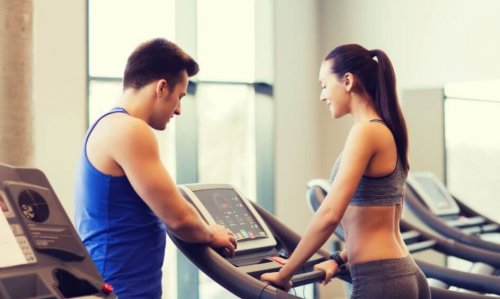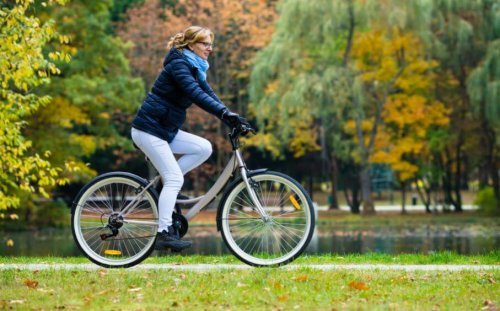Can I do cardio after a heart attack?

After suffering from a heart attack, it’s very important to take care of yourself and comply with everything that the doctors advise. Many patients wonder if they can do cardio exercises after a heart attack. If you have the same doubt, read the following article.
Can you do cardio after a heart attack?
The answer is affirmative as long as you take into account some very important issues such as the type of activity, the intensity of the exercise, and the periodicity. What does it depend on? Basically, on the condition or state in which the heart is in after the infarction.

As a first measure, a doctor must perform all of the examinations that are considered appropriate to check how the patient’s heart is. The doctor will analyze the state of the myocardium, if there are arrhythmias present when doing physical effort, or if the patient is suffering myocardial ischemia or not.
If all these tests show a positive diagnosis and the person isn’t at risk of any of the pathologies indicated above, then the doctor can give the “ok” to do cardio after a heart attack.
Benefits of cardio after a heart attack
It’s essential to remember that generally, the benefits of exercise are many. This is particularly the case for a person who has survived a heart attack. Performing sports is likely to reduce the risk factors of another episode (second heart attacks are more frequent than you think) and will also control blood pressure.
Moreover, with exercise, you will reduce your levels of lipids, cholesterol, and blood glucose. Stress will decrease and you will fight being overweight—all direct causes of heart attacks.
Fear is present in people who have suffered a heart attack since naturally, they don’t want it to happen again. That’s why many begin to lead a sedentary life, thinking that the cardiovascular system won’t suffer any “shocks”.
However, this is a misconception that should be eradicated with information and consultations with a cardiologist. In reality, what the heart needs is to strengthen itself. How can you achieve this? With moderate cardio exercise.
Sports not only benefit us on a physical level but also on an emotional level too. This works wonders in someone who’s suffered a heart attack. Many people believe that after suffering from a heart attack, their life is about to end. However, when you socialize and exercise with other people, you’ll gradually feel more confident and less fearful.
Doing cardio after a heart attack: recommended exercises
Once your doctor agrees that you are able to do cardio after a heart attack, the next step is to discover what kind of activity you can or want to perform. The cardiologist can recommend the activities that best adapt to your particular situation and, above all, in terms of intensity and periodicity.

If you have never done any exercise before (or haven’t practiced in a long time), it’s very important to start lightly. Begin with something easy and do not exceed more than 20 or 30 minutes twice a week. Going for a walk in the park can be an excellent idea.
The best sport to practice is the one that allows you to move muscle mass and makes the heart work (slightly). Once you have taken walks and feel good, you can increase the intensity and jog slowly or even make middle-distance races. This will also cause the respiratory system to work and blood to flow properly through your body.
Another option is riding a bike, whether stationery at the gym or outdoors. Road circuits are advisable instead of those mountain bike ones because they are less demanding. There are also people who enroll in a ballroom dance class. They practice Zumba at home or they dance salsa as a couple. Besides doing cardio they also have a great time!

Swimming, of course, is one of the most recommended cardio activities to do after a heart attack. You can even combine it with other sports or practice the famous Aquagym.
The important thing about exercising after suffering a heart attack is to enjoy it and not be too self-demanding. Maybe at some point, you can choose another activity that you like more or dare to become more intense, but go slowly at first. Paying attention to the signals that your body provides is crucial.
After suffering from a heart attack, it’s very important to take care of yourself and comply with everything that the doctors advise. Many patients wonder if they can do cardio exercises after a heart attack. If you have the same doubt, read the following article.
Can you do cardio after a heart attack?
The answer is affirmative as long as you take into account some very important issues such as the type of activity, the intensity of the exercise, and the periodicity. What does it depend on? Basically, on the condition or state in which the heart is in after the infarction.

As a first measure, a doctor must perform all of the examinations that are considered appropriate to check how the patient’s heart is. The doctor will analyze the state of the myocardium, if there are arrhythmias present when doing physical effort, or if the patient is suffering myocardial ischemia or not.
If all these tests show a positive diagnosis and the person isn’t at risk of any of the pathologies indicated above, then the doctor can give the “ok” to do cardio after a heart attack.
Benefits of cardio after a heart attack
It’s essential to remember that generally, the benefits of exercise are many. This is particularly the case for a person who has survived a heart attack. Performing sports is likely to reduce the risk factors of another episode (second heart attacks are more frequent than you think) and will also control blood pressure.
Moreover, with exercise, you will reduce your levels of lipids, cholesterol, and blood glucose. Stress will decrease and you will fight being overweight—all direct causes of heart attacks.
Fear is present in people who have suffered a heart attack since naturally, they don’t want it to happen again. That’s why many begin to lead a sedentary life, thinking that the cardiovascular system won’t suffer any “shocks”.
However, this is a misconception that should be eradicated with information and consultations with a cardiologist. In reality, what the heart needs is to strengthen itself. How can you achieve this? With moderate cardio exercise.
Sports not only benefit us on a physical level but also on an emotional level too. This works wonders in someone who’s suffered a heart attack. Many people believe that after suffering from a heart attack, their life is about to end. However, when you socialize and exercise with other people, you’ll gradually feel more confident and less fearful.
Doing cardio after a heart attack: recommended exercises
Once your doctor agrees that you are able to do cardio after a heart attack, the next step is to discover what kind of activity you can or want to perform. The cardiologist can recommend the activities that best adapt to your particular situation and, above all, in terms of intensity and periodicity.

If you have never done any exercise before (or haven’t practiced in a long time), it’s very important to start lightly. Begin with something easy and do not exceed more than 20 or 30 minutes twice a week. Going for a walk in the park can be an excellent idea.
The best sport to practice is the one that allows you to move muscle mass and makes the heart work (slightly). Once you have taken walks and feel good, you can increase the intensity and jog slowly or even make middle-distance races. This will also cause the respiratory system to work and blood to flow properly through your body.
Another option is riding a bike, whether stationery at the gym or outdoors. Road circuits are advisable instead of those mountain bike ones because they are less demanding. There are also people who enroll in a ballroom dance class. They practice Zumba at home or they dance salsa as a couple. Besides doing cardio they also have a great time!

Swimming, of course, is one of the most recommended cardio activities to do after a heart attack. You can even combine it with other sports or practice the famous Aquagym.
The important thing about exercising after suffering a heart attack is to enjoy it and not be too self-demanding. Maybe at some point, you can choose another activity that you like more or dare to become more intense, but go slowly at first. Paying attention to the signals that your body provides is crucial.
All cited sources were thoroughly reviewed by our team to ensure their quality, reliability, currency, and validity. The bibliography of this article was considered reliable and of academic or scientific accuracy.
Aparicio Garca-Molina, V. A., Carbonell-Baeza, A., & Delgado-Fernández, M. (2010). Beneficios de la actividad física en personas mayores. Revista Internacional de Medicina y Ciencias de La Actividad Fisica y Del Deporte. https://doi.org/ISSN: 1577-0354
This text is provided for informational purposes only and does not replace consultation with a professional. If in doubt, consult your specialist.








